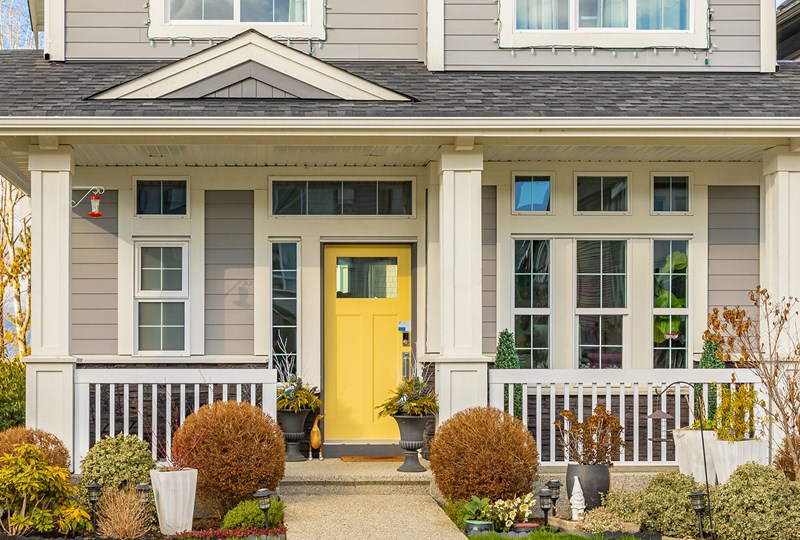
Key insights
- The market is booming for sellers, and the vast majority of homeowners have record-high equity. Still, inventory remains low.
- Today’s homeowners have an average of $185,000 in home equity.
- By planning ahead and working with a local expert, many of today’s homeowners can take advantage of the sellers’ market to sell their current residence and upgrade to a home that better suits their current needs.
What is home equity, and why is it so high?
In simple terms, home equity is the difference between what you owe on your home’s mortgage payment and its current market value. Your home’s equity rises when:
- You pay off more of your mortgage (and your home value remains steady).
- Market conditions raise your home’s value, creating a bigger gap between what you owe and what your home is worth.
Due to rising prices over the last several years, most homeowners are in their best equity position in many years–often at record highs.
If equity is so high, why is inventory so low?
Despite this increase in equity, many homeowners across Minnesota and western Wisconsin (and nationally) aren’t selling. Inventory remains low as some homeowners hold out on listing their homes for sale. But why?
Sellers who are also move-up buyers may be temporarily staying put to see what happens with interest rates. This results in a shortage of available homes for sale and has put the squeeze on buyers looking for “the right” property.
Those same sellers may also wonder how much of an upgrade they’ll be able to get, given the tight inventory, buyer competition in the marketplace, and higher interest rates.
What should homeowners do to make a smart selling decision?
Staying on the fence forever isn’t the solution. Here are three main ways that hesitant sellers can protect themselves when listing their homes for sale today.
1. Get a customized, personal home value estimate
When you see your home’s value displayed online, it’s the result of a computer algorithm that’s using county records (which can be up to two years old), recent home sales, and pricing data to determine a general range for your property.
This is a starting point, but it does not consider your home's exact location or condition. By asking a local expert to evaluate your home in person, you will get a true market analysis that goes beyond aggregated data.
Need a hand? Edina Realty has 2,000 local experts who offer free (no obligation) home value estimates in every neighborhood across Minnesota and western Wisconsin. Reach out today to get one scheduled.
2. Consider the full financial picture of selling, not just interest rates
- Sellers are typically receiving around 100% of their asking price*, thanks in large part to the supply of homes for sale not meeting the demand from buyers. This means more competitive offers from buyers and less discounting from sellers.
- According to data published in Q3 of 2022 by Investopedia, homeowners have an average of $185,000 worth of equity.
- Sellers can take advantage of cash-on-hand for down payments and buying down interest rate points.
- Sellers may be able to buy a larger home with a similar monthly mortgage payment even with a higher interest rate. How? With a bigger down payment from existing equity.
- Experts disagree on where interest rates will go (up/down) offering no clear predictions.
3. Add a reverse contingency to your purchase agreement
Today’s market, as you know, favors sellers. That means that if you do place your home on the market, you have some leverage to ensure the transaction works in your favor — from start to finish.
If you’re worried that your home will sell quickly, but you won’t be able to find a new residence by the date of closing, you and your REALTOR® can add a reverse contingency to the purchase agreement. In short, you can request that your home sale be contingent on you and your family finding another home to purchase. You may also require that the home be rented back to you until you secure another home.
4. Consider short-term or transitional housing
If a reverse contingency isn’t an option but you’d still like to sell, you can also consider short-term or transitional housing options. This would allow you to take your time looking for the right house instead of settling for a less-than-perfect new residence.
Short-term housing options include:
- Short-term rental properties (including single-family homes, townhouses, and apartments)
- Residing in an extended-stay hotel or inn
- Staying with friends or family members with extra space
Wondering what comes next?
Whether you have enough money to purchase a new home free and clear or get into a larger home with a similar monthly payment, it can help to talk with a no-pressure selling expert. Reach out to our customer care team to be matched with a local specialist.
*Data courtesy NorthstarMLS for the 16-County Twin Cities metro area for May 2023.









 ©2025 Prosperity Home Mortgage LLC®. (877) 275-1762. 3060 Williams Drive, Suite 600, Fairfax, VA 22031. All first mortgage products are provided by Prosperity Home Mortgage, LLC®. Not all mortgage products may be available in all areas. Not all borrowers will qualify. NMLS ID #75164 (For licensing information go to: NMLS Consumer Access at
©2025 Prosperity Home Mortgage LLC®. (877) 275-1762. 3060 Williams Drive, Suite 600, Fairfax, VA 22031. All first mortgage products are provided by Prosperity Home Mortgage, LLC®. Not all mortgage products may be available in all areas. Not all borrowers will qualify. NMLS ID #75164 (For licensing information go to: NMLS Consumer Access at